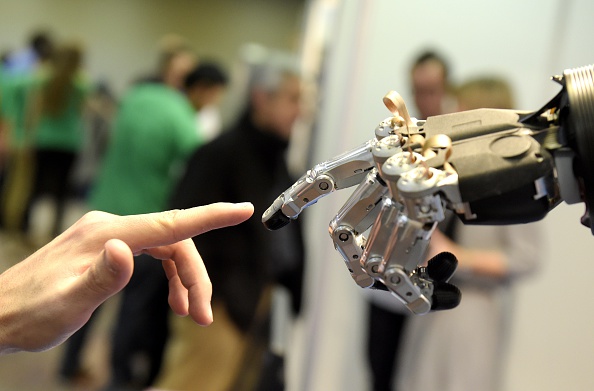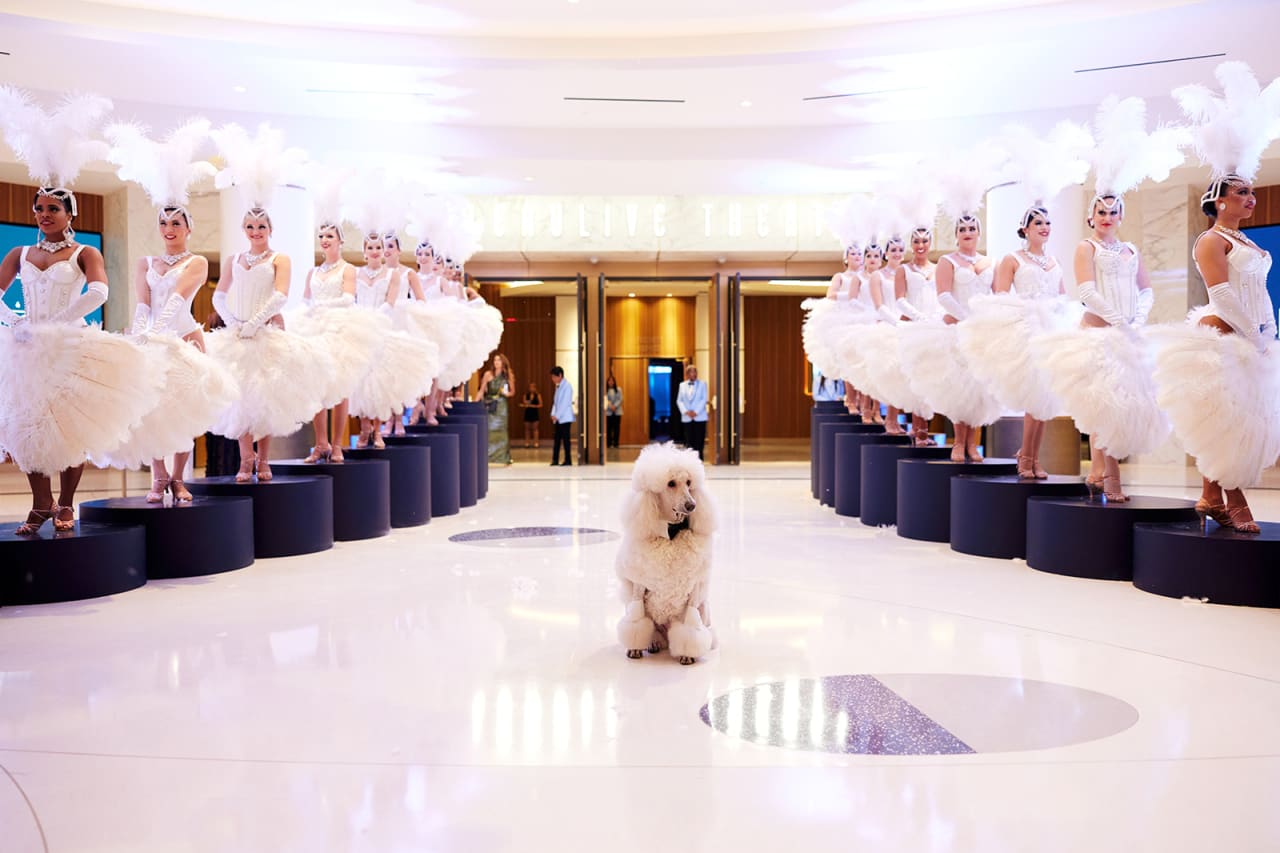Tech That Will Change Your Life In 2021
New ways to work, exercise, see the doctor, watch movies and sanitise every surface in sight will continue to proliferate. So will monthly subscription fees.
A pandemic that ravaged the world and accelerated the digital transformation of, well, everything? Not even the best of futurists or Magic 8 ball-shaking psychics could have predicted the year that was 2020. And yet while we may have missed the biggest news, our predictions for what would occur in the tech world held up decently. (OK, fine, we didn’t think Quibi would die that quickly.)
Now, 2020 has become the lens through which all our 2021 predictions are glimpsed. As we continue to live in a pandemic-fighting world, innovators will aim tech solutions at our personal and professional lives, from at-home streaming movie debuts to an overdue evolutionary leap of the laptop. But we will also strive to reach a new normal, and you’ll see technology helping us there, too, from new hybrid work practices to high-tech masks. And accompanying each new product or service: yet another monthly subscription fee.
Now that we’ve rung in the new year, here’s what to look for.
Pandemic-Inspired Innovation
Masks, webcams and sanitisers for our bodies… and our gadgets. The pandemic sparked a reliance on things our 2019 selves couldn’t ever have imagined. With marketers keen to capitalize on the new interest (and anxiety), 2021 will likely be full of new gizmos that boldly promise to improve it all.
One key area: better webcams for our constant video calling. Samsung has already announced that its forthcoming Galaxy smartphone, expected in early 2021, will improve video recording and calling. We anticipate laptop makers will do the same and finally ditch their crappy, low-resolution webcams.
Portable versions of UV sanitisers for cleaning your phones and gadgets are on the way to keep in your car or your pocket. Another thing we may eventually never leave home without? High-tech masks. Expect a range of built-in features: Bluetooth and microphones (see Maskfone), a fan-powered wearable air purifier (see LG PuriCare), a mask with a UV LED (see the UV Mask). Look for air-quality sensors, contact-tracing assistance and more.
You may even end up wearing a social-distancing sweater. SimpliSafe, a home-security company, made a version that sounds an alarm when someone comes within 6 feet of you. Intended as a fun prototype, the sweater sold out immediately.
Laptops Arm Up
Suddenly, laptops aren’t the most boring gadget in the world. Our reliance on them for at-home work and school spurred demand the category hadn’t seen in years. (“Children, let me tell you about the Great Chromebook Shortage of 2020.”) Then, in November, Apple released a MacBook Air and MacBook Pro that ditched Intel inside for Apple’s own M1 chips. The result? Machines that have never been so quiet and cool, and lasted so long on one charge.
The move from chips based on Intel’s x86 architecture to ones based on lower-powered Arm technology, like the ones inside phones, is setting the entire computing industry on a new course. Lenovo, Acer and Microsoft have begun releasing Windows or Chrome OS laptops with chips from Qualcomm, whose processors power the most popular Android phones. This will only accelerate in the coming year, with nearly every major Windows PC maker working with Qualcomm on laptops and some models even gaining 5G, said Qualcomm President Cristiano Amon.
Apple, which plans to transition its entire Mac lineup to its own processors by 2022, is also expected to release a long-anticipated new iMac, among other things. And it won’t come as a surprise when more tech giants, including Amazon and Microsoft, embrace their own custom chips in everything from laptops to servers to wearables.
Hollywood at Home
Many of this year’s top films are hitting living rooms at the same time as theatres. Yep, that means watching “Dune” opening weekend in your PJs. (Woohoo!)
In April, Universal Pictures made “Trolls World Tour” an online rental as theatres closed. Unexpectedly, it broke digital records, racking up US$100 million through platforms such as Apple TV. Then Disney made a big bet on “Mulan,” launching the title on the company’s Disney+ streaming service for an additional $30 a pop. Following the Christmas release of “Wonder Woman 1984” to all HBO Max subscribers (with no extra fees), WarnerMedia plans to release its entire 2021 slate on the online platform.
Netflix has long adhered to this model, and now Hollywood is catching on, more out of necessity than out of desire. AMC reported attendance is down 85% year over year and Regal Cinemas, the second-largest theatre chain in the U.S., closed all of its locations nationwide.
The director of “Dune,” slated for an HBO Max debut in the fall, wrote a scathing op-ed about how streaming alone can’t sustain the film industry. Yet the studios’ digitally minded parent companies, including Comcast, AT&T and Disney, might disagree, finding themselves in possession of the primary distribution channel for their content—and the valuable proprietary viewer data that comes with it.
Reality: Assisted, Not Augmented
When will Apple release a pair of smart glasses? Probably not 2021. And while Google made a big step in this category this summer by acquiring North, a pioneer in projection glasses, it cancelled the second version of North’s glasses as it plots its future. It’s actually Facebook that declared it will launch smart glasses in 2021—and they’ll be Ray Bans.
Facebook Chief Executive Mark Zuckerberg said in September these glasses will be “the next step on the road to augmented reality.” They won’t feature virtual objects that appear to interact with the real world. AR headsets like Microsoft’s HoloLens might deliver an immersive experience, but they’re still expensive and cumbersome.
“Assisted reality” glasses—which project text, images and even video feeds into a person’s field of view—are of more value now, says Brian Ballard, CEO of remote-expertise company Upskill. Businesses have found utility in remote video conferencing that hovers in workers’ field of view, or turn-by-turn directions they don’t have to look down to follow.
More Remote Workouts… and Doctor Visits
At-home health is here to stay. Downloads of health and fitness apps grew by 46% world-wide in the first half of 2020, according to MoEngage, a marketing research firm.
Connected fitness equipment, once considered a pricey extravagance, turned into a no-brainer as gyms closed. Peloton, which makes smart spin bikes and treadmills, said it tripled its revenue in the quarter ending in September. Lululemon Athletica acquired Mirror, a wall-mounted panel that streams fitness classes, in June.
Doctor checkups are changing, too. Hospitals used phone, interactive video and messaging to minimise contact with coronavirus patients, after fast-tracking new telemedicine systems. In March, federal authorities loosened health privacy regulation to allow health-care providers to facilitate visits over FaceTime, Facebook Messenger, Zoom or Skype.
PlushCare, a virtual primary care provider, saw a 460% increase in patient signups this year. Ryan McQuaid, the company’s CEO, doesn’t think the bump is a short-term response to a crisis, citing the time-consuming nature of in-person visits. “On average, Americans spend over 20 minutes in the waiting room alone,” he said.
E-commerce ≠ Amazon
The pandemic packed 10 years of consumer e-commerce adoption into a single quarter, and forced every company that wasn’t Amazon—especially those with large retail footprints—to scramble to offer consumers new and better ways to shop from home.
Target saw an explosion in kerbside pickup from online orders, while warehouse retailer Costco reported unprecedented growth in e-commerce. Walmart launched a Prime-like membership program called Walmart+, and rapidly added features to keep up the competition. (Walmart recently eliminated order minimums and shipping fees on Walmart.com orders, and provides no-fee delivery on grocery carts totalling US$35 or more.) Shopify, which powers payments for many small businesses online, expanded its own network of fulfilment centres so those businesses could get goods to customers more quickly and efficiently, without turning to Amazon.
Now that fast, free shipping is table stakes and retailers recognize they won’t see the foot traffic they counted on pre-pandemic, consumers finally get an online version of an old retail staple: comparison shopping. In 2021, Amazon’s value proposition—that if it isn’t always the least expensive way to shop, it’s at least the most convenient—will be tested. Meanwhile, its market power—along with Google’s, Facebook’s and Apple’s—will continue to be the focus of regulatory scrutiny.
Death by Subscription
Everything now has some sort of subscription attached to it. Your 600 video streaming apps, your grocery-delivery service, your cloud storage, certainly, but also your workout bike? Your to-do list app? Your dog food? Everything as a Service (EaaS), as we like to call it, is only going to continue. More things you once bought as a one-time payment will be offered instead as a recurring payment. And expect new sorts of service-focused offerings, too—especially tied to your hardware purchases. If Apple’s Fitness+—a new digital workout subscription that requires an Apple Watch—is successful, Apple and other hardware makers will likely attach more services to their products.
Those subscriptions you’re already paying for will continue to rise. Companies argue you need to pay more so they can add more content and features. In June, YouTube TV raised its cable-like bundle by US$15. In October, Netflix raised its most popular streaming plan from US$12.99 to US$13.99. In November, Google eliminated its free Google Photos storage tier. And Disney announced that in March, the monthly price of Disney+ will go from $6.99 to $7.99.
Return of the Trust Fall
While remote work has many advantages, building trust between employees isn’t one of them. Online, there is no water cooler, no nearby coffee shop for informal brainstorms, no place to grab a drink after work. But companies whose employees worked remotely long before the pandemic already had a solution: the off-site retreat.
Buffer, a fully remote company, gets its entire, globe-spanning team together at least once a year. Dozens of other companies whose employees work mostly or entirely at home do the same thing, which has led to a cottage industry of firms that will plan these retreats for you.
One reason companies have embraced remote work is that it makes employees happier, but another is that it saves companies money on office space. In 2021, expect to see many of the millions of employees who have permanently shifted to remote or hybrid work piling into party buses, doing group yoga and seeking inner peace in the presence of their bosses—for far less than the cost of the rent on the offices they left behind.
EV, American Style
Look, electric vehicles are cool, but few bear any resemblance to good old Detroit steel. That changes in 2021 with the anticipated arrival of some green beasts.
This summer, startup Rivian expects to ship the already-sold-out launch editions of its first-generation R1T pickup and R1S SUV, machines with ranges of over 300 miles and price tags starting around $70,000.
Then there’s the GMC Hummer EV pickup, due in the fall from General Motors. Reservations are already full for the $112,595-and-up Edition 1, which is billed to have a range of over 350 miles and can do zero-to-60 in about 3 seconds. Lower-tier trims will be available in subsequent years, though true to form, the prices will stay on the big side.
Ford expects to have its own battery-powered monster, the F-150 Electric, on sale in mid-2022. Back in pre-pandemic times, the company filmed a prototype towing over a million pounds. And sometime in late 2021 or early 2022, we might even see Tesla’s Cybertruck.
Those may be the biggest consumer vehicles coming to market, but they’re not the only ones working to up the EV’s average size. This past year brought battery-powered SUVs from the likes of Toyota, Audi and Jaguar, and the trend will continue: In 2021, more than half of the battery-electric and plug-in hybrid options on the U.S. market will be SUVs—82 models total, as opposed to 66 passenger-car models, according to forecasts by AlixPartners, a global consulting firm.
 Copyright 2020, Dow Jones & Company, Inc. All Rights Reserved Worldwide. LEARN MORE
Copyright 2020, Dow Jones & Company, Inc. All Rights Reserved Worldwide. LEARN MORE
This stylish family home combines a classic palette and finishes with a flexible floorplan
Just 55 minutes from Sydney, make this your creative getaway located in the majestic Hawkesbury region.
As Paris makes its final preparations for the Olympic games, its residents are busy with their own—packing their suitcases, confirming their reservations, and getting out of town.
Worried about the hordes of crowds and overall chaos the Olympics could bring, Parisians are fleeing the city in droves and inundating resort cities around the country. Hotels and holiday rentals in some of France’s most popular vacation destinations—from the French Riviera in the south to the beaches of Normandy in the north—say they are expecting massive crowds this year in advance of the Olympics. The games will run from July 26-Aug. 1.
“It’s already a major holiday season for us, and beyond that, we have the Olympics,” says Stéphane Personeni, general manager of the Lily of the Valley hotel in Saint Tropez. “People began booking early this year.”
Personeni’s hotel typically has no issues filling its rooms each summer—by May of each year, the luxury hotel typically finds itself completely booked out for the months of July and August. But this year, the 53-room hotel began filling up for summer reservations in February.
“We told our regular guests that everything—hotels, apartments, villas—are going to be hard to find this summer,” Personeni says. His neighbours around Saint Tropez say they’re similarly booked up.
As of March, the online marketplace Gens de Confiance (“Trusted People”), saw a 50% increase in reservations from Parisians seeking vacation rentals outside the capital during the Olympics.
Already, August is a popular vacation time for the French. With a minimum of five weeks of vacation mandated by law, many decide to take the entire month off, renting out villas in beachside destinations for longer periods.
But beyond the typical August travel, the Olympics are having a real impact, says Bertille Marchal, a spokesperson for Gens de Confiance.
“We’ve seen nearly three times more reservations for the dates of the Olympics than the following two weeks,” Marchal says. “The increase is definitely linked to the Olympic Games.”

Getty Images
According to the site, the most sought-out vacation destinations are Morbihan and Loire-Atlantique, a seaside region in the northwest; le Var, a coastal area within the southeast of France along the Côte d’Azur; and the island of Corsica in the Mediterranean.
Meanwhile, the Olympics haven’t necessarily been a boon to foreign tourism in the country. Many tourists who might have otherwise come to France are avoiding it this year in favour of other European capitals. In Paris, demand for stays at high-end hotels has collapsed, with bookings down 50% in July compared to last year, according to UMIH Prestige, which represents hotels charging at least €800 ($865) a night for rooms.
Earlier this year, high-end restaurants and concierges said the Olympics might even be an opportunity to score a hard-get-seat at the city’s fine dining.
In the Occitanie region in southwest France, the overall number of reservations this summer hasn’t changed much from last year, says Vincent Gare, president of the regional tourism committee there.
“But looking further at the numbers, we do see an increase in the clientele coming from the Paris region,” Gare told Le Figaro, noting that the increase in reservations has fallen directly on the dates of the Olympic games.
Michel Barré, a retiree living in Paris’s Le Marais neighbourhood, is one of those opting for the beach rather than the opening ceremony. In January, he booked a stay in Normandy for two weeks.
“Even though it’s a major European capital, Paris is still a small city—it’s a massive effort to host all of these events,” Barré says. “The Olympics are going to be a mess.”
More than anything, he just wants some calm after an event-filled summer in Paris, which just before the Olympics experienced the drama of a snap election called by Macron.
“It’s been a hectic summer here,” he says.

AFP via Getty Images
Parisians—Barré included—feel that the city, by over-catering to its tourists, is driving out many residents.
Parts of the Seine—usually one of the most popular summertime hangout spots —have been closed off for weeks as the city installs bleachers and Olympics signage. In certain neighbourhoods, residents will need to scan a QR code with police to access their own apartments. And from the Olympics to Sept. 8, Paris is nearly doubling the price of transit tickets from €2.15 to €4 per ride.
The city’s clear willingness to capitalise on its tourists has motivated some residents to do the same. In March, the number of active Airbnb listings in Paris reached an all-time high as hosts rushed to list their apartments. Listings grew 40% from the same time last year, according to the company.
With their regular clients taking off, Parisian restaurants and merchants are complaining that business is down.
“Are there any Parisians left in Paris?” Alaine Fontaine, president of the restaurant industry association, told the radio station Franceinfo on Sunday. “For the last three weeks, there haven’t been any here.”
Still, for all the talk of those leaving, there are plenty who have decided to stick around.
Jay Swanson, an American expat and YouTuber, can’t imagine leaving during the Olympics—he secured his tickets to see ping pong and volleyball last year. He’s also less concerned about the crowds and road closures than others, having just put together a series of videos explaining how to navigate Paris during the games.
“It’s been 100 years since the Games came to Paris; when else will we get a chance to host the world like this?” Swanson says. “So many Parisians are leaving and tourism is down, so not only will it be quiet but the only people left will be here for a party.”
This stylish family home combines a classic palette and finishes with a flexible floorplan
Just 55 minutes from Sydney, make this your creative getaway located in the majestic Hawkesbury region.






















